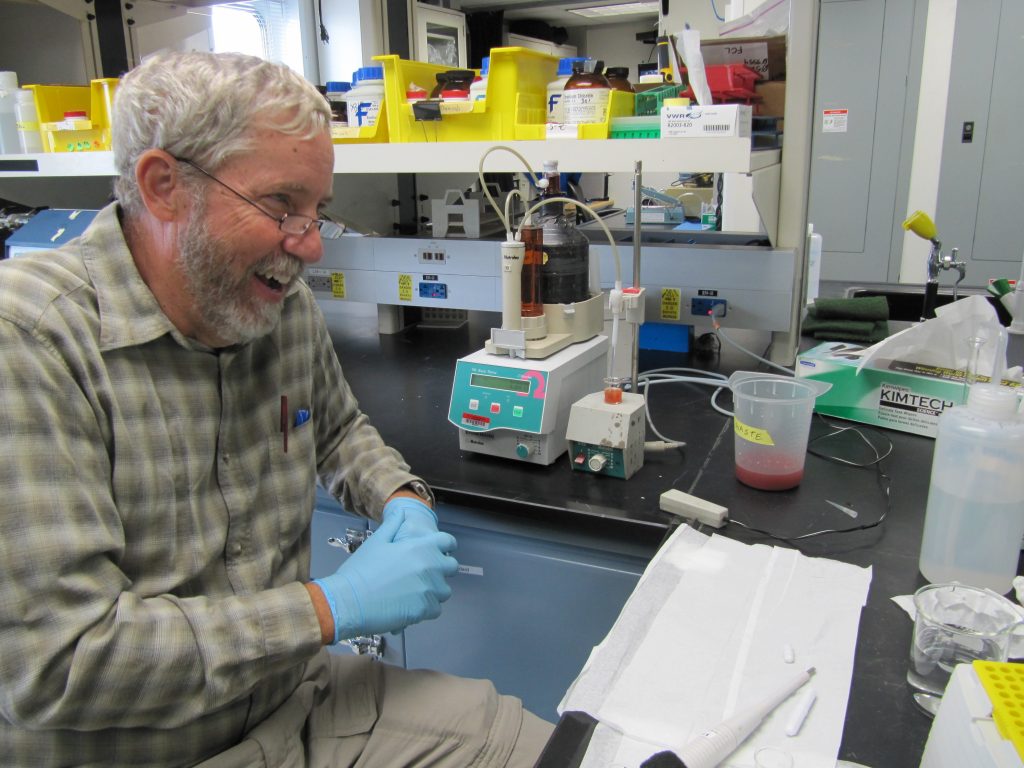
What to do with water pressed from a core
Over the past few days we have explored first-hand how different fields of science can be used to help us to better understand what exists beneath our oceans. To help scientists understand what materials are in cores drilled from the bottom of our oceans, a number of experiments from sedimentologists, chemists, paleo climatologists can be conducted. One such experiment involves pressing water from a core sample to test for salinity, or the amount of dissolved material in sea water. Scientists are able to examine salinity values of any unknown water substance by testing the levels of chlorine.
After testing the salinity value of pure sea water in the chemistry lab today, we were provided with a water sample pressed from a core to test. Working in pairs, our first test of pure sea water, we had to add about .571 ml of silver nitrate to our mixture. The result we were looking for was for our yellow water sample to turn just the slightest shade of reddish-brown. Our water sample was yellow due to the addition of an indicator substance. My partner Bob was first to test our unknown water sample. Using our experience from testing pure sea water and applying it to our unknown substance we passed the slight reddish-brown indicator color with flying color. With the touch a single touch and the addition of .088 ml of silver nitrate our sample turned a solid reddish-brown color. We all got a good laugh but learned that next time we should start testing our examples using small additions of an indicator substance. But this is what science is all about, experimenting and testing to gain a better understanding of our world. We have to explore and be adventurous in order to solve problems and we learn as we go.